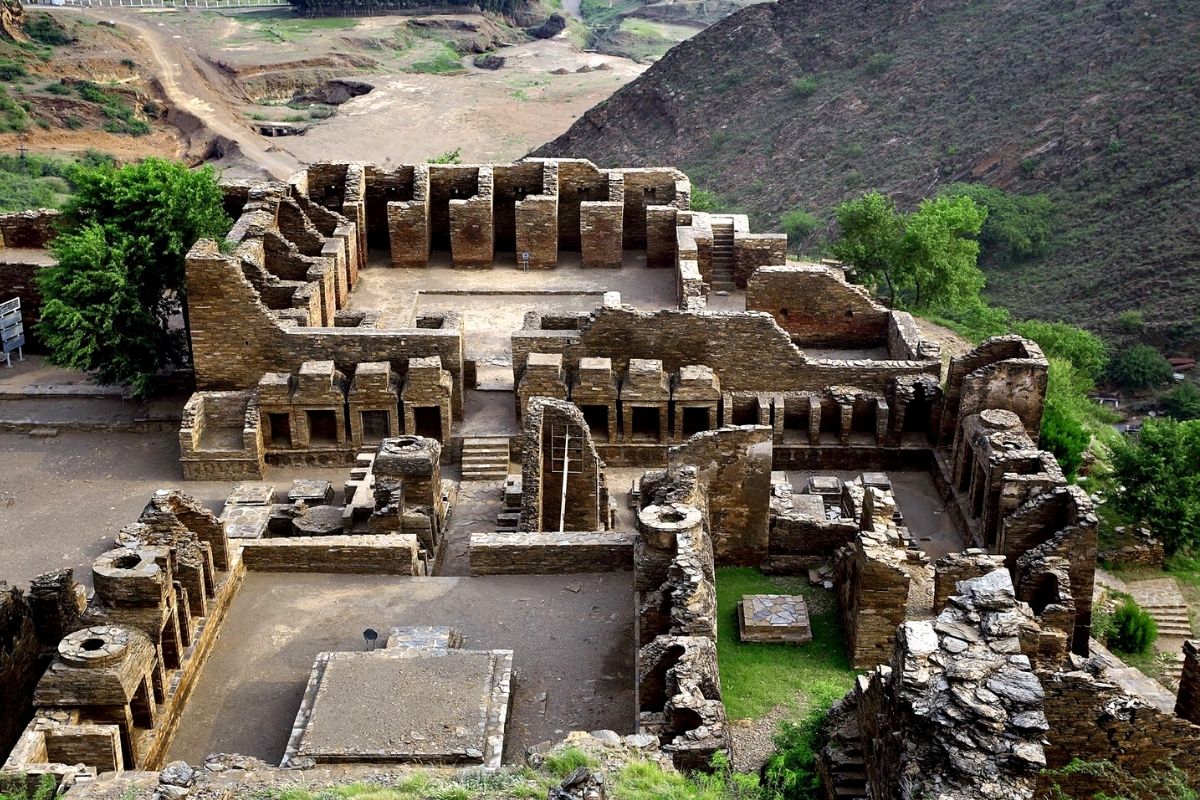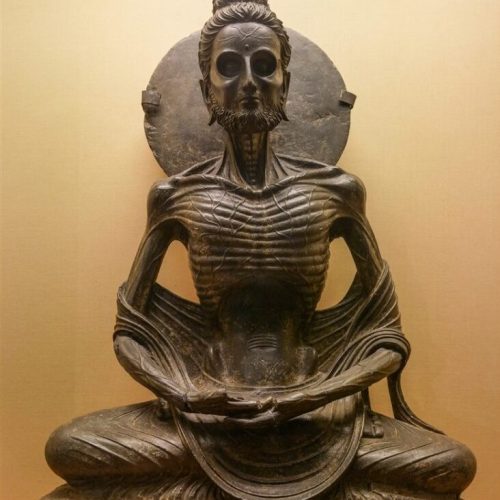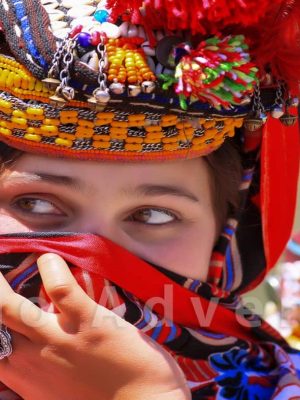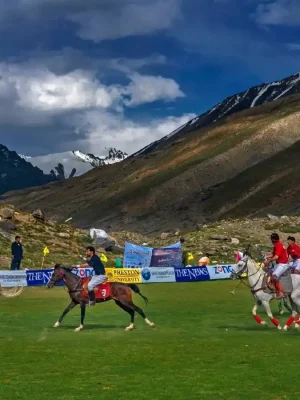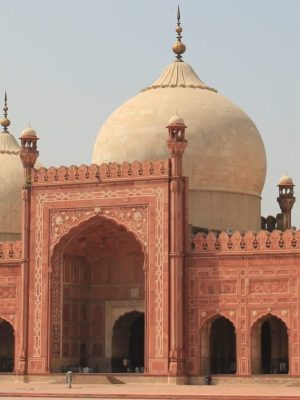The Gandhara Civilization O Pakistan
IntroductionNestled in the crossroads of South and Central Asia, the Gandhara Civilization stands as a testament to the rich cultural and historical heritage of Pakistan. Flourishing from the 1st century BCE to the 7th century CE, Gandhara was a vibrant center of trade, art, and religious development, playing a pivotal role in shaping the cultural landscape of ancient South Asia. Historical BackgroundThe Gandhara region primarily comprises present-day northern Pakistan, including parts of Khyber Pakhtunkhwa and Punjab. Historically, it was a critical hub along the ancient Silk Road, facilitating trade between the Indian subcontinent, Central Asia, and beyond. The civilization emerged through the confluence of various cultural influences, including Greek, Persian, Indian, and Central Asian traditions, especially after the conquests of Alexander the Great and subsequent Hellenistic influences. Gandhara reached its zenith during the Kushan Empire (1st to 3rd centuries CE), which promoted Buddhism and fostered artistic and architectural advancements. Art and ArchitectureGandhara ArtGandhara is renowned worldwide for its distinctive school of Buddhist art, which melded Hellenistic Greek artistic techniques with Indian religious themes. This unique style is evident in the exquisite sculptures of Buddha, Bodhisattvas, and other deities, characterized by realistic features, detailed drapery, and expressive facial expressions. Architectural MarvelsThe region is dotted with impressive archaeological sites such as:
Religious SignificanceGandhara played a crucial role in the spread of Buddhism across Asia. The region was a major center for Buddhist learning and monastic activity, attracting pilgrims and scholars from various parts of Asia. The flourishing of Buddhist art in Gandhara significantly influenced the development of Buddhist iconography seen in later Asian cultures. Archaeological DiscoveriesExcavations in Gandhara have unearthed a treasure trove of artifacts, including:
These discoveries have provided invaluable insights into the social, religious, and artistic life of ancient Gandhara. Cultural Legacy Today, Gandhara’s legacy continues to inspire artists, historians, and archaeologists. Its contributions to Buddhist art and architecture are recognized worldwide, and efforts are ongoing to preserve and promote its archaeological sites. ConclusionThe Gandhara Civilization of Pakistan is a shining chapter in the story of human cultural development. Its artistic innovations, religious contributions, and strategic location made it a vital bridge between East and West. Exploring Gandhara offers a glimpse into a world where cultures converged, creating a legacy that endures to this day. |
Itinerary
DAY-01-LahoreArrival Lahore, after short rest, city tour DAY-02-LahoreFull day city tour of Lahore, afternoon visit Wagah border to see the flag ceremony DAY-03 Lahore – Khewra Salt Mines – Islamabad Drive to Islamabad en-route visit to Khewra salt mine. DAY-04 Islamabad Full day sightseeing of Rawalpindi/Islamabad |
DAY-05 Islamabad – Taxila – PeshawarDrive to Peshawar en-route visit Taxila archaeological sites and museum DAY-06 Peshawar – Takht-e-Bhai – SWATHalf-day city tour of Peshawar, after lunch drive to Swat visiting Takht-e-Bhai on the way DAY-07 SwatFull day tour of historical sites of Swat including Museum DAY-08 Swat – Islamabad Drive back to Islamabad DAY-09 Departure Transfer to airport for homebound flight |
Included
S# | DETAILS |
01 | Airport pick and drop |
02 | Accommodation bed & B.fast, twin bedroom in Islamabad and other cities standard air-condition rooms. |
03 | Flight Ticket or transportation from Islamabad/ Skardu/ Gilgit/chitral or from these cities to Islamabad |
04 | Skardu/Gilgit/Hunza Hotel (bed & breakfast) |
05 | Two nights in Chilas/ Besham hotel (bed & breakfast) incase of flight cancellation. |
06 | Jeeps Skardu/Askoli/ Hushe/ Skardu/shimshal/Chitral/Kalash or vice virsa. |
07 | Wages, insurance, food equipment of cook |
08 | Wages, insurance, food equipment of Assistant cook, |
09 | Wages, insurance, food of Porter Sirdar |
10 | Porter Payment, Low altitude porters. |
11 | Baggage,75 kg (going time) and 50 kgs (on return) for expedition 45 days or more and 25 kg for trekking group & trekking peak |
12 | Full board camp food during trek & at base camp. |
13 | Mess tent, Kitchen tent, store tent, table , chairs and kitchen equipment |
14 | Reconfirmation of international flight tickets. |
15 | Camping fees, road taxes & bridge crossing of expedition members & Porters. |
16 | Porters Equipments. |
17 | Assistance in obtaining climbing permit and other documentations |
18 | Briefing and debriefing in the Ministry of tourism |
19 | CKNP fee: US $ 150/per member |
20 | 1000 US$ guarantee pollution fee. |
21 | 200 US$ environmental protection fund. |
22 | Fuel, Tarpaulin, and Stove for porters. |
23 | Kerosene Oil for porter and Members |
24 | Toilet tent and shower tent |
25 | Members will have individual D-4 in Base camp tents, and mattress for expeditions more than one month |
26 | LO insurance or guide transport and hotel/ equipment and TA/DA. |
27 | Royalty fee and additional member fee |
Excluded
S.# | DETAILS |
01 | Sleeping bags, rucksacks and personal clothing. |
02 | Medication, ground evacuation and helicopter rescue (US$15,000) of any kind. |
03 | Room services, laundry charges, beverages and items of personal nature. Phone /communication |
04 | Climbing food beyond base camp, equipment, high altitude Porters wages bills. |
05 | Insurance or liability of any members. |
06 | Tip to staff |
07 | Custom clearing and forwarding agent’s charge. |
08 | Food & drinks during stay in hotel (City) |
09 | Transport to other cities or places out of itinerary |
10 | Custom clearing and forwarding agent’s charge. |
11 | Extra baggage charges during international or domestic flight |
12 | Insurance or liability of any members. |
TERMS & CONDITION:Chogholingsa Trek &Tours promulgates its terms and conditions for any kind of trip, trekking, mountaineering, hiking, rafting, wild safaris and other services being operated so far by the company. The terms and conditions set forth will bring forward its limitations before any interested visitor advances for the programs alluded. What should our clients do for reservation of any kind of services provided by the company? 40% of payment in advance should be made up 1 month earlier or as soon as the trip is confirmed, since it is a proof that you are sure to attempt the trip. It should be done as alluded so that the company can manage all the necessary documents, permissions and required field staffs. The full settlement of the payment should be cleared before the client proceeds for the trip or any kind of service at the arrival in Pakistan. The advance payment is not refundable in case of overturning the trip in any condition on behalf of the client. The advance payment is only refundable if the holding company shows any technical impediments regarding the trip. No refund is made for 40% deposit amount in case of delay arrival, no show or cancellation of trip for any other else reason. For any consideration regarding the terms alluded, a bilateral negotiation can be attempted between the hosting company and the client The advance payment can be directly deposited to our bank account through any bank in the world. 1: REFUND: No refund will be made for 50% deposit amount in case of cancellation of trip for any other else reason. Having paid full amount of any trip, you’re entitled to incur refund in case if you want to cancel your trip. Still, cancellation charge is invoiced to you. Written notification of your cancellation should be made to cancel any trip. Nevertheless, you’re imposed cancellation charge as advised below: – 2: SUPPLEMENT CHARGE: On our holidays tour / trek packages, rooms or tents are provided in twin sharing basis. Thus, single room supplement charge will be imposed to client who does not have another tour participant to share room / tent with. 3: INCOMPLETE TOUR: No refund will be made to clients who drop out from the journey regardless of whatever portions remain unused in the itinerary. 4: CLIENTS’ RESPONSIBLE: A tour / trek guide who represents Chogholingsa trek & Tours deserves all authority during your tours. If you commit any unlawful act, you are compelled to leave the tour. No refund will be made in such case. 5: IMPACT ON YOUR JOURNEY: We put our every effort to ensure comfortable traveling of yours,but it is must to understand that what you might be accustomed to in the western affluent countries, the Asian countries can’t afford such facilities. Weather is another factor that directly impact on your journey. Hence, patience in mind, enthusiasm and proper preparation before head is must to venture into journey. 6: TRAVEL INSURANCE: You must purchase comprehensive travel insurance package against medical, natural calamity, helicopter evacuation, personal accident, trip cancellation etc. This is suggested to all our esteemed clients. 7: TOUR AMENDMENT: 8: PAPERS AND DOCUMENTS: All necessary documents should be presented in sequence for example to issue visa, necessary permits etc. We’re not accountable in case of any trip formality not completed in time before the trip departs on the absent of essential papers and documents. 9: RISK AND RESPONSIBILITY: Your safety and enjoyment is our prime concern. We therefore carry out our responsibility honestly & sincerely to ensure your holiday trouble–free as well as you have desired. Nevertheless, unless stated otherwise, trip may be change under uncertain and inherent circumstances such as land-slides, road blockage, flood, snow political unrest, cancellation of flight, delay arrival, sickness or accidents etc. Any extra cost incurring there is your personal responsibility and should be borne on the spot. 10: FLIGHT DELAY / CANCELLATION: There is virtually possibility of flight delay or postponement for notorious weather in Karakoram & Himalayan Mountain regions of Pakistan which could be happened, especially during off season, you’re highly advised to reserve extra days to prepare with some delays and avoid frustrating consequence. In case of flight cancellation pre-tour/post-tour, you need to meet your accommodation and food costs yourself. Chogholingsa trek & Tours puts every effort to ensure your comfortable traveling, but it is must to understand that what you might be accustomed to in the other affluent countries, the Asian countries can’t afford such facilities. Weather is another factor that directly impacts your journey. Hence, patience in mind, enthusiasm and proper preparation before beginning is must to venture into journey. |
→01 RESERVATIONS / PAYMENTS: A non-refundable deposit of $300 or 15% of the tour is required in order to make a reservation with the company. Total balance is due 3 weeks prior to departure. When price once fixed then any extra expenses will not be charged to the client |
Account Details |
Bank Name: | Habib Bank Pvt.LTD. |
Account Title: | Chogholingsa |
IBAN NO: | PK73 HABB 0004767901352403 |
swift code | HABBPKKA Or HABBPKKA476 |
Branch Code | 0476 |
Branch name: | Main Bazar Branch Skardu |
You may also like to visit
Chitral with the unique Kailash Valley (known as the Wearers of Black Robes) – a remaining minority of approximately 3500 people living in three isolated but beautiful valleys known as Bumburet, Rambur and Berir
Nestled amidst the majestic peaks of the Karakoram Range in Gilgit-Baltistan, the Shandur Polo Festival is one of Pakistan’s most exhilarating cultural and sporting events.
Pakistan, a land of ancient civilizations and vibrant cultures, holds within its boundaries a rich and diverse heritage that reflects centuries of history, tradition, and artistry.



